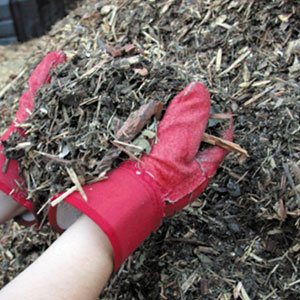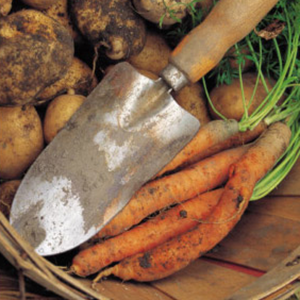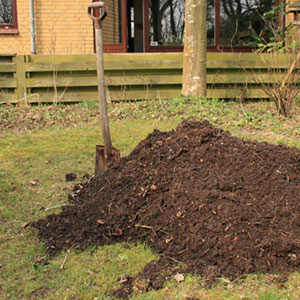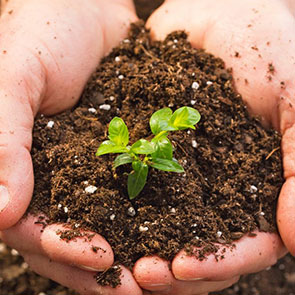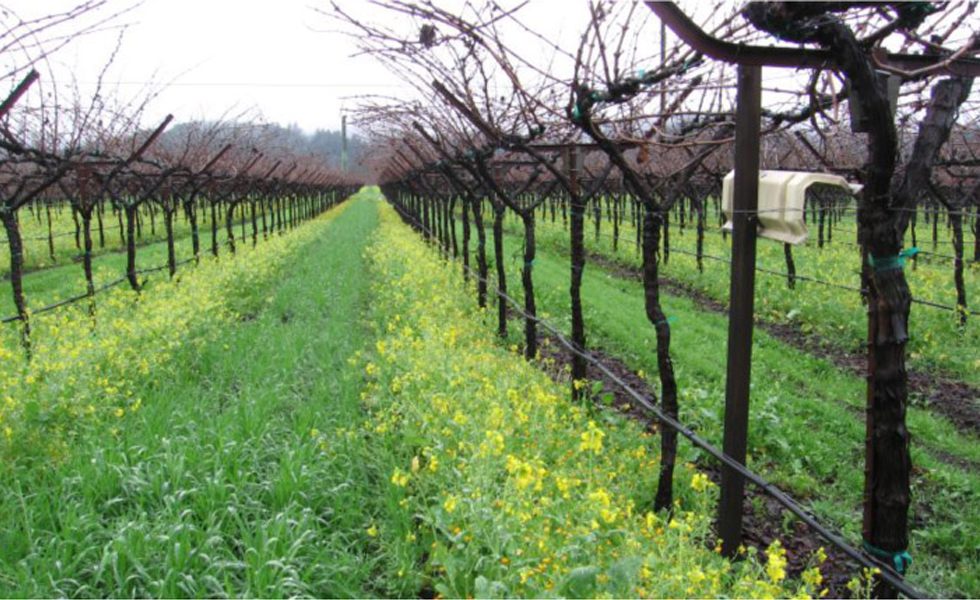
Green manure being used in a vineyard to control weeds and improve soil fertility. Image credit: Wikimedia Commons
Appropriate Fertilizer Use
The goal of applying fertilizer is to supply just enough to meet the needs of the plant. Too much fertilizer can run off into nearby waters, leach into groundwater or encourage weeds. A plant’s health should be the guide. If plants suffer from a lack of vigor, retarded growth, sparse foliage or leaf discoloration, they may be nutrient deficient, although improper drainage or inadequate aeration are more likely the cause.
How to get started:
- Test soil to determine whether there really is a nutrient deficiency.
- If supplemental nutrients are necessary, choose a renewable natural fertilizer — preferably produced locally — over synthetic, petrochemical-based fertilizers or mined products like rock phosphate. Synthetic fertilizers require much more energy to produce than natural options such as blood meal, bone meal, fish meal or emulsion, and kelp meal.
- Whenever appropriate, use single-nutrient fertilizers instead of so-called complete fertilizers that contain nitrogen, phosphorus and potassium. For example, if soil is low in nitrogen but not in phosphorus and potassium, use blood meal, fish emulsion or another high-nitrogen natural fertilizer. Better yet, grow green manure.
- Add only the amount of fertilizer recommended in the soil test, no more. Follow the guidelines on the fertilizer label.
- Avoid contributing to water pollution by applying fertilizer only to the soil, not paved areas, and sweep stray particles into the planting bed. Do not use fertilizer near streams or drainage ways.

